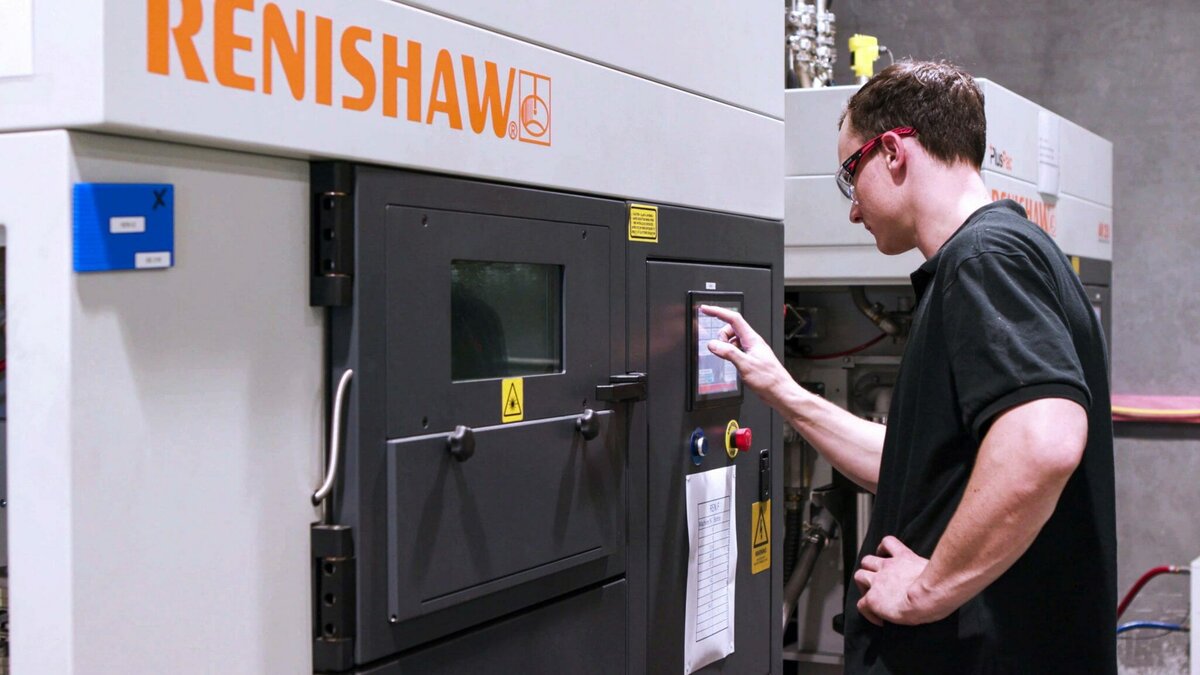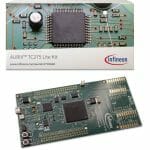A spin out from a national research organisation, RAM3D set out to provide a state-of-the-art metal 3D printing service, spanning design, prototyping and ultimately full-scale production. Founded on the core values of collaboration, continuous learning and constant improvement, the company was quick to identify the functional attributes it really needed in its machinery. To establish its high-quality volume manufacturing capability, RAM3D purchased six Renishaw additive manufacturing systems, with the intention to invest in more Renishaw machines in the future.
Background
The Southern Hemisphere’s largest independent metal 3D printing service, New Zealand-based RAM3D, is a recognised trailblazer for end-to-end metal additive manufacturing (AM) solutions for a range of global industry sectors, including aerospace, marine, food processing and many more.
RAM3D set out to meet the growing demand for metal 3D printing services in the Australasia region. Personally involved with metal 3D printing technology since 2008, CEO and co-founder of RAM3D, Warwick Downing observed, “In a way, RAM3D’s origins and success reflect the New Zealand culture. A culture where people aren’t afraid to try new things and try different approaches in order to overcome difficult challenges.”
He continued, “In our first couple of years, we had to learn very fast and while to a certain extent we were being told what machines we were going to need, we were quick to understand the real impact of operating costs and the need for a more flexible manufacturing platform. We realised early on that those extra ‘bells and whistles’ on an AM machine weren’t necessarily a good thing. Very often, they were in fact the things that would cause a machine to break down or underperform. The most important things to us was assuring production process integrity, high-quality and reliability, and ensuring cost efficiency and effectiveness.”
In 2014, RAM3D approached Renishaw for advice and decided to purchase the company’s latest AM machine.
Challenges
In a matter of just a few years RAM3D experienced a dramatic evolution in the market for metal 3D printing services. The challenges the company faced first-hand included raising awareness in a nascent marketplace, educating on design for additive manufacture (DfAM), and ultimately gearing up for a shift from prototyping, to prototyping and full production.
Gilly Hawker, RAM3D’s Marketing Manager explained, “In our very early days the perception of 3D metal printing really was that it was just for one-off, custom part prototyping. Its real benefits, in terms of improved part functionality, part integration, weight reduction, cost effectiveness and so on, just weren’t widely recognised. We did have to play our part in improving general market awareness and helping to rectify any misconceptions.”
Downing added, “More specifically, in the beginning we often received enquiries for 3D metal printing for parts which really weren’t appropriate for the process.
And so, we have had to spend a lot of time explaining the particular importance of designing for manufacturing and for designing parts specifically for the 3D additive manufacturing process – the whole concept of what ultimately became known as ‘DfAM’.”
Overtime, the company had to contend with a seismic shift from low volume prototyping to the provision of a high-volume production service. While of course this is the best kind of problem to be faced with, after years of focused effort and investment, this shift presented challenges. To respond to the increased customer demand, they had to ramp up manufacturing capacity while at the same time maintaining the process’s perfect consistency in part quality – irrespective of part complexity, metal material and target volume.

Solution
Recognising the advantages of Renishaw’s AM systems, their ease-of-use, quality of their laser beams and their repeatability, RAM3D elected to make Renishaw their partner of choice. The machine purchased at the time was equipped with an optical system delivering 250W of laser power for a beam diameter of just 70µm. Its human-machine interface was highly graphical and intuitive in nature. Driven by forecast customer demand, the company followed a phased introduction of additional AM machines to meet growing production capacity requirements.
Downing said, “The machine purchased from Renishaw at the time, was the only one that offered us the flexibility, openness and easy set-up that we were looking for. We had lots of ideas of our own on optimising our manufacturing process, and this machine gave us the freedom that we needed to implement them. If we wanted to change a parameter, to adjust it to more closely suit a particular part, then we could.”
Across its Renishaw AM machines the company prints metal parts in a complete range of high-quality metal powders, including stainless steel 15-5ph, stainless steel 316, inconel 718 and titanium 64, and at the time of writing is also looking to add Maraging tool steel to its product portfolio.
Results
In a little over five years since purchasing their first Renishaw AM machine, RAM3D has grown its metal 3D printing business from mainly a prototyping service, to being able to offer a fully-fledged volume production service as well. They are also able to serve to customers throughout the world as well as its Australasian home territory.
Downing said, “To be a commercial success in this field, you need to make the right choice of AM machine, make the manufacturing capacity available, and develop the right manufacturing process.”
Since partnering with Renishaw, RAM3D has seen customer part volumes increase exponentially and have been running the machines for 24 hours a day for at least 6 days a week. While demand is very much sector and product specific, the company has seen production run volumes rise from 3,000 to 4,000 mark, up to 12,000 per year, and is expected to reach 20,000 over next few years.
At the time of writing, RAM3D’s operating plant in Tauranga, New Zealand, consists of seven metal 3D printing machines, six of which are Renishaw machines. RAM3D is committed to investing in more Renishaw AM machines in the future, including the next generation product offering, the RenAM 500 series, with a plan to have 9-10 operating machines by the turn of the year.
The company is also trialling Renishaw’s QuantAM software. A dedicated build preparation software that; optimises part support structures, aligns parts within the build volume and sets up the final 3D printing file.
By establishing a common platform for its growing additive manufacturing operations, RAM3D has been able to continuously boost efficiency year-on-year. A process material changeover on a machine for example, from one metal to another metal, can now take less than an hour.
The company is ultimately assuring its volume production customers with guaranteed repeatability and complete consistency in product output. By partnering with Renishaw, RAM3D is helping customers to produce products that are superior in terms of function, part integration, performance, weight and cost effectiveness.
RAM3D’s future perspective
Speaking about his future outlook on metal 3D printing, Downing comments, “Globally speaking, I think the metal 3D printing sector is at a bit of a tipping point right now, and it’s certainly only going to grow in importance and influence. It is no longer a ‘new technology’, it’s here and now.”
“More and more innovative businesses are coming to realise that even for the most mature of product types, metal additive manufacturing provides an opportunity to inject new life, by overcoming the design constraints of other manufacturing processes. So with some degree of certainty I’d say that metal 3D printing is going to be pushing hard on perceived manufacturing boundaries in the coming years.”
About RAM3D
RAM3D is the largest metal 3D printing service provider in Australasia. RAM3D have been involved in metal 3D printing since 2008 and is recognised as one of the leaders in additive manufacturing, focusing on selective laser melting (SLM) in titanium, stainless steel and inconel metal alloy powders. RAM3D’s state-of-the-art additive manufacturing hub based in Tauranga, New Zealand, serves a range of sectors including aerospace, defence, marine industry, food manufacturing and the industrial market; it prints parts for a diversity of world-wide industries.





